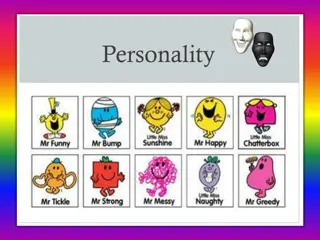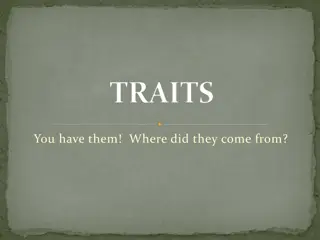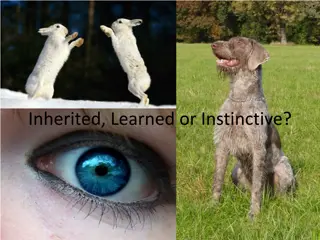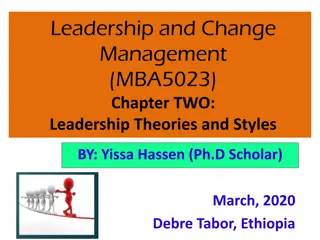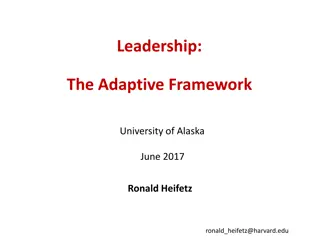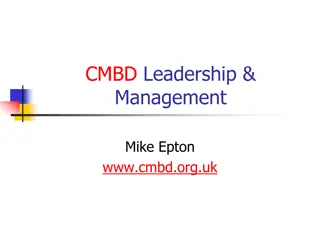Exploring Leadership Theories: Traits and Behaviors
Leadership theories have evolved from trait theory focusing on personal qualities to behavioral theories emphasizing actions and interactions. While early research sought universal traits for leadership, it encountered challenges due to varied traits among leaders and non-leaders. Behavioral theories shifted focus to leader actions and their impact on subordinates, seeking to uncover effective leadership behaviors. This exploration delves into the dynamic nature of leadership theories and their implications for understanding leadership effectiveness.
Download Presentation

Please find below an Image/Link to download the presentation.
The content on the website is provided AS IS for your information and personal use only. It may not be sold, licensed, or shared on other websites without obtaining consent from the author. Download presentation by click this link. If you encounter any issues during the download, it is possible that the publisher has removed the file from their server.
E N D
Presentation Transcript
Leadership and Change Management (MBA5023) Chapter Two: 2.2 Leadership Theories BY: Yissa Hassen (Ph.D Scholar) March, 2020 Debre Tabor, Ethiopia
A. Trait Theory Traits are distinctive internal/personal qualities or characteristics of an individual, 1. Physical (height, weight, appearance, health, etc), 2. Personal (self-confidence, dominance, adaptable, extroversion/sociability, originality etc) and 3. Mental (intelligence, creativity, knowledge, technical competence etc).
Contd. A leader trait is a physical or personality characteristic that can be used to differentiate leaders from followers. It is the old approach Trait theory originated from an ancient theory called Great Man theory that assumes that leaders are born not made -a belief dating back to the ancient Greeks and Romans.
Contd. In searching for measurable leadership traits, researchers took two approaches: A. They attempted to compare the traits of those who emerged as leaders with the traits of those who did not. B. They attempted to compare the traits of effective leaders with those of ineffective leaders.
Contd. Generally, the efforts to identify universal leadership traits ran into difficulties for the following reasons: 1. Not all leaders possess all the traits and many non-leaders may possess most of the traits. 2. It gives no guidance as to the magnitude of each trait for a person to be a leader. 3. No agreement has been reached as to what their relationships are to the actual instances of leadership. 4. Traits tend to be a chicken-and-egg proposition i.e. Successful leaders may display traits such as good vocabulary, education and self-confidence after they have assumed leadership positions.
B. Behavioral Theories When it became evident that effective leaders did not seem to have any distinguishing traits or characteristics, researchers tried to isolate the behaviors that made leaders effective. In other words, rather than try to figure out what effective leaders were, researchers tried to determine what effective leaders did, how they delegated tasks, how they communicated with and tried to motivate their subordinates, how they carried out their tasks, and so no.
Contd. This tries to answer the questions What do effective leaders do? What ineffective leaders don't do? How do subordinate react emotionally and behaviorally (performance) to what the leader does?" Two major dimensions of leader behavior emerged from this body of research; one deals with how leaders get the job done and the other deals with how leaders treat and interact with their subordinates.
The University of Michigan Studies Through interviewing leaders and followers, researchers at the University of Michigan identified two distinct styles of leadership, referred to as .job-centered and employee - centered. The job-centered leader practices close supervision on the subordinates performance. This leader relies on coercion, reward, and legitimate power to influence the behavior and performance of followers. The employee-centered leader believes in delegating authority and supporting followers in satisfying their needs by creating a supportive work environment. The employee centered leader is concerned with followers', their personal advancement, growth and achievement.


